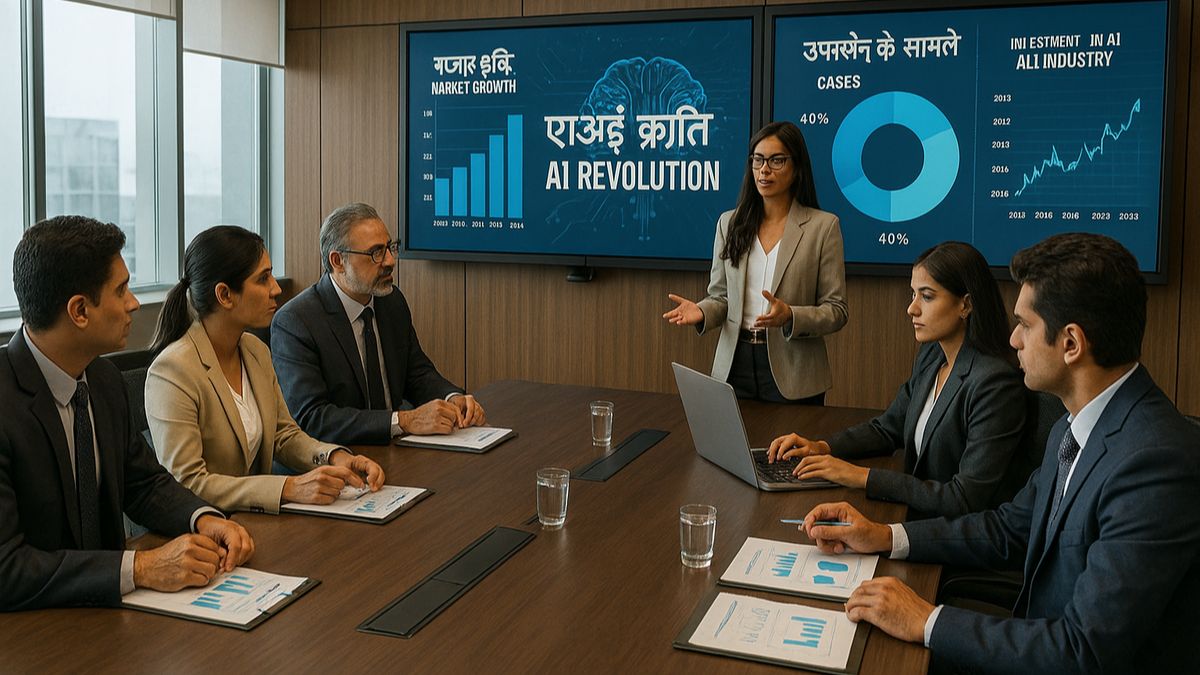India’s dynamic manpower industry stands at the epicentre of a technological transformation that’s revolutionising workforce management across the subcontinent. The AI revolution in HR has become instrumental in modernising how staffing agencies throughout Mumbai, Delhi, Bangalore, Chennai, and emerging tier-2 cities approach talent acquisition, employee management, and client service delivery.
As India’s premier manpower solutions provider, MahadManpower recognises that embracing the AI revolution in HR is essential for maintaining a competitive advantage in the world’s largest democratic workforce marketplace. This technological shift is fundamentally changing how we connect India’s vast talent pool with opportunities across diverse industries and geographic regions.
The Indian startup ecosystem, supported by significant venture capital investment, is driving innovation in HR technology solutions specifically designed for the unique challenges and opportunities present in the Indian employment landscape.
AI Revolution in HR: India’s Leadership in HR Technology Innovation
The subcontinent’s strategic emphasis on digital transformation positions artificial intelligence as a cornerstone of economic growth, making the AI revolution in HR critical for India’s evolving labour market dynamics. Indian manpower agencies are rapidly implementing AI-powered systems to manage extensive candidate databases spanning multiple states, languages, skill levels, and industry verticals.
Advanced Talent Sourcing Across Indian Markets Modern AI platforms revolutionise how Indian manpower agencies identify and connect candidates with opportunities across sectors, including information technology, manufacturing, healthcare, financial services, and emerging digital economy industries. These sophisticated systems analyse candidate profiles from urban centres and rural areas while ensuring compliance with Indian labour regulations and state-specific employment requirements. Artificial about itartificial intelligence.
Leading Mumbai- and Bangalore-based agencies report remarkable efficiency improvements—often 75-90% faster processing times—when leveraging AI-driven recruitment technologies, demonstrating the measurable benefits of the AI revolution in HR for operational excellence in Indian markets.
Multilingual Workforce Intelligence The AI revolution in HR enables sophisticated analysis of employee satisfaction patterns across India’s linguistically diverse workforce. These systems process communications in Hindi, English, Tamil, Telugu, Bengali, Marathi, and other regional languages while predicting retention trends and recommending targeted engagement strategies for different cultural and linguistic groups.
Venture Capital Investment Fueling Indian Innovation
 Indian venture capital investment in HR technology exceeded $420 million in 2024, with approximately 80% allocated toward AI-powered solutions addressing domestic market requirements. This substantial capital infusion accelerates the AI revolution in HR by supporting Indian startups developing platforms specifically for regional workforce challenges and opportunities. AI is reshaping.
Indian venture capital investment in HR technology exceeded $420 million in 2024, with approximately 80% allocated toward AI-powered solutions addressing domestic market requirements. This substantial capital infusion accelerates the AI revolution in HR by supporting Indian startups developing platforms specifically for regional workforce challenges and opportunities. AI is reshaping.
Strategic Investment Priorities Multi-language processing platforms represent a major focus area, enabling sophisticated analysis of candidate profiles and employee communications across India’s 22 official languages. The AI revolution in HR includes advanced natural language processing capabilities specifically designed for Indian linguistic diversity.
Skills-based matching systems attract significant investment, addressing India’s unique challenge of connecting rural talent with urban opportunities while bridging skill gaps across traditional and emerging industries. These platforms analyse educational credentials from Indian universities and technical institutions while assessing practical competencies. Discover how AI.
Compliance-integrated systems designed for Indian labour law complexity are increasingly important, with AI platforms automatically monitoring regulatory requirements across different states, union territories, and central government mandates.
Transformative Applications for Indian Staffing
Rural-Urban Talent Bridge
The AI revolution in HR actively supports India’s economic development by identifying optimal placement opportunities for rural candidates in urban markets. Advanced AI systems analyse skill requirements, training needs, and career development paths to facilitate successful migration of talent from smaller towns to metropolitan opportunities.
These platforms help Indian manpower agencies contribute to national development goals while maintaining service quality and client satisfaction, demonstrating how the AI revolution in HR aligns commercial success with social impact objectives.
Educational Institution Integration
A critical application involves seamless connection with Indian educational institutions, from IITs and IIMs to regional technical colleges and skill development centres. The AI revolution in HR includes automated analysis of academic credentials, project portfolios, and extracurricular achievements to identify high-potential candidates.
Cultural Intelligence and Regional Optimization
Advanced AI systems analyse regional preferences, cultural considerations, and local market dynamics to optimise workforce compositions while respecting diverse traditions, festival calendars, and regional business practices across different Indian states.
Regional Implementation Strategies
Successfully implementing the AI revolution in HR within the Indian context requires addressing unique challenges specific to the subcontinent’s diverse marketplace and regulatory environment.
Multi-State Compliance Management Indian labour regulations vary significantly across states, requiring AI systems that can navigate complex legal frameworks while ensuring consistent service quality. The AI revolution in HR includes automated monitoring of state-specific requirements, union guidelines, and central government mandates.
Language Processing Excellence Successful AI implementation demands sophisticated processing capabilities for multiple Indian languages, including regional dialects and code-switching patterns common in Indian professional communications. The AI revolution in HR must accurately analyse resumes, communications, and performance evaluations across linguistic diversity.
Educational System Integration Indian AI platforms must understand the complex educational ecosystem, from traditional university degrees to modern skill certification programmes, government training initiatives, and international qualification recognition systems.
Future Investment Trends and Market Evolution
Indian venture capital firms increasingly target the AI revolution in HR solutions, demonstrating regional expertise, proven market success, and deep understanding of Indian workforce dynamics and cultural considerations.
Skill Development Integration Emerging investment focuses on platforms connecting with government skill development programmes, industry training initiatives, and certification bodies to create comprehensive talent development ecosystems supporting India’s economic growth objectives.
Tier-2 and Tier-3 City Expansion Strategic investment supports the AI revolution in HR solutions designed for Indian agencies expanding beyond metropolitan areas, addressing the unique challenges of smaller city markets while maintaining technological sophistication and service quality.
Government Initiative Alignment Next-generation investment targets solutions integrating with initiatives like Digital India, Make in India, and Skill India, connecting workforce development with national economic development strategies.
Strategic Advantages for Progressive Indian Agencies
The AI revolution in HR presents extraordinary opportunities for Indian manpower agencies to enhance service quality, operational efficiency, and market positioning while supporting national development objectives and exceeding client expectations across diverse industry sectors.
Agencies successfully implementing AI-powered solutions while maintaining cultural sensitivity and regional expertise achieve significant competitive advantages in talent sourcing, workforce optimisation, and client relationship management throughout India’s vast marketplace.
As the AI revolution in HR continues evolving, MahadManpower remains committed to leveraging cutting-edge technology while preserving the personalised service and cultural understanding that defines excellence in Indian business practices and client relationships.
Organisations embracing this technological transformation today position themselves for sustained success in tomorrow’s increasingly sophisticated and competitive marketplace, where AI-driven workforce solutions become essential for industry leadership across India’s diverse economic landscape.
The AI revolution in HR represents more than technological advancement; it’s a strategic imperative for Indian manpower agencies committed to excellence, innovation, and contributing to India’s vision of becoming a global hub for talent and economic opportunity in the digital age.



 Indian Candidate Profile Authentication
Indian Candidate Profile Authentication